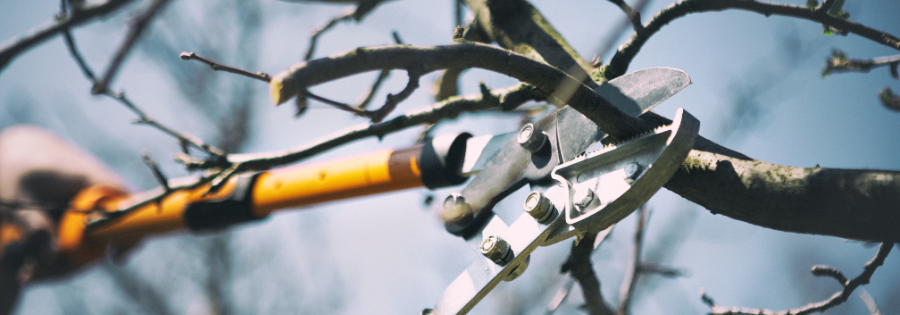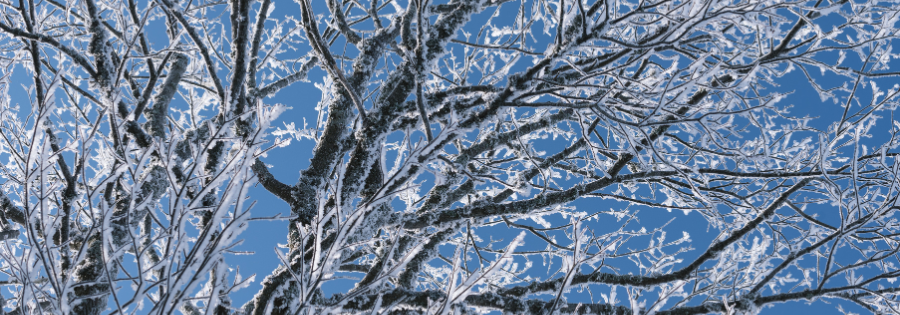Winter Tree Care Essentials for Property Owners

Winter brings many challenges for trees, as the colder temperatures and harsh weather conditions can impact their health and overall well-being. So, property owners must take proactive steps to ensure their trees remain strong and resilient throughout the winter months.
8 Ways to Protect Your Trees This Winter
The combination of freezing temperatures, harsh winds, and heavy snowfall can lead to various issues for trees during the winter. Common concerns include frost cracking, desiccation (drying out), and damage from ice or snow accumulation on branches.
But, implementing proper winter tree care practices — such as tree trimming, mulching, and protecting trunks — can help mitigate these risks and ensure your trees remain resilient throughout the colder months. Here are a few essential tips for winter tree care.
1. Mulching
Mulching around the base of trees provides insulation and helps regulate soil temperature. Apply a layer of mulch, about 2-4 inches deep, around the tree — but avoid piling it against the trunk. Mulching also helps retain moisture, which is crucial during winter months when dehydration is a risk.
2. Pruning
Winter is also a good time for commercial tree pruning. Remove dead, damaged, or weak branches to prevent them from falling during winter storms. Thinning the tree’s crown allows better air circulation and reduces the risk of snow and ice accumulation.
3. Hydration
While trees may not need as much water in winter, it’s still important to ensure they are hydrated before the ground freezes. Watering deeply before the first freeze helps trees withstand winter stress.
4. Protecting Against Wildlife
Winter can drive wildlife to seek food and warmth, leading them to gnaw on tree bark. Use tree wraps or hardware cloth to protect the lower trunk from rodents and other animals that may cause damage.
5. Anti-Desiccant Sprays
Evergreen trees can lose moisture through their leaves in winter, a process known as desiccation. Anti-desiccant sprays create a protective coating on leaves, reducing water loss and helping trees retain moisture.
6. Snow and Ice Removal
Safely remove accumulated snow from branches by gently brushing it off with a broom. For ice, avoid breaking it off, as this can cause more harm. Instead, let it melt naturally.
7. Monitoring for Pests and Diseases
Winter provides an opportunity to inspect trees for signs of pests or diseases. Look for unusual spots, growths, or insect activity. Addressing issues early prevents them from worsening in the spring. Learn more about pest control methods.
8. Professional Inspection
Consider hiring a professional arborist for a winter inspection. Through a tree assessment, they can identify potential problems, recommend treatments, and provide specialized care tailored to your trees’ needs.

Additional Lawn Care Tips for Winter
While proper winterization is crucial, a few extra measures can ensure your lawn thrives even in the coldest months. Here are some additional tips to add to your winter tree care routine:
- Mowing at the Right Height: Adjust your mower to a lower setting for the last mow of the season. Trimming the grass slightly shorter helps prevent snow mold and other issues during winter.
- Avoid Excessive Foot Traffic: Avoid walking on your lawn as much as possible during frost or snow. The grass can become brittle in the cold, and foot traffic may cause damage.
- Right of Way Clearing: Regularly clear your property of fallen leaves, branches, and other debris. Commercial land clearing prevents mold growth and allows the grass to breathe.
- Watering on Milder Days: If there are warmer days during winter, consider giving your lawn a light watering. This can be beneficial, especially if there hasn’t been much precipitation.
- Snow Removal Caution: Be gentle on your lawn when removing snow or frost. Shoveling or using a snow blower can cause damage to the grass if not done carefully.
- Monitor for Pests: While pests are less active in winter, watching for signs of infestations is still necessary. Seasonal pest control can treat any issues immediately to keep them from getting worse.
- Plan for Spring: Use the winter months to plan for spring lawn care. Research new landscaping ideas, select seeds or plants, and create a maintenance schedule for the upcoming season.
Remember, each lawn is unique, so adapt these tips based on your specific grass type, region, and climate. Taking these additional steps will set the stage for a vibrant and healthy lawn when spring arrives.
Transform Your Property with Coastal Spray’s Commercial Landscaping Team
By following these winter tree care essentials, property owners can help maintain the health and longevity of their trees. For professional landscaping and brush removal services, including winter tree care, call Coastal Spray. Our experienced team specializes in maintaining healthy trees and landscapes throughout the year.
Contact Coastal Spray today for expert commercial tree trimming services that keep your property looking its best every season.